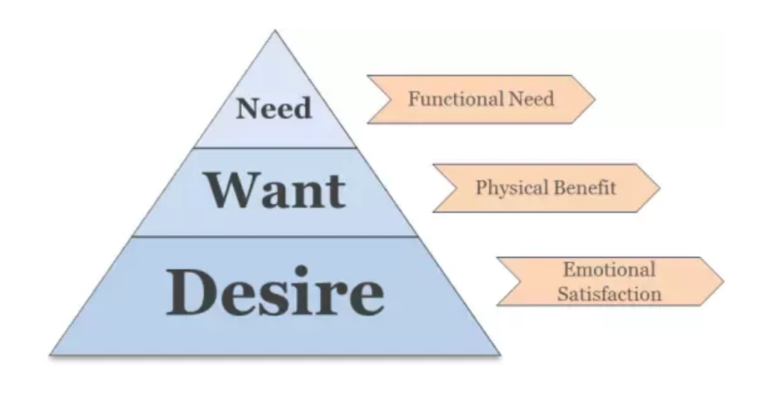Unveiling Insights – How to Maximize Your Win-Loss Analysis Template
Ultimately, win/loss analysis benefits the entire organization (including marketing and product management). However, how you approach it is essential.
That is why starting with goals and a clearly defined methodology is crucial. This way, your team can collect valuable qualitative prospect feedback to help them make better decisions.
Start with High-Level Metrics
There are numerous components involved in performing a win-loss analysis. It’s important to know what you’re looking for ahead of time to make the process as seamless and effective as possible. This way, you can tailor your interviews to ensure you’re collecting the insights most beneficial to your organization.
Start with your current win rate and overall win/loss ratio. By determining these high-level metrics, you can effectively contextualize all the other information you’ll uncover during your analysis. For instance, if you find out that your overall win rate against competitor XYZ is 25%, this will help you identify what areas of your business need improvement when it comes to winning deals against that particular competition.
Aside from knowing your current win rate, you’ll also want to understand why your company wins and loses. It will allow you to improve your product, sales experience, or marketing content, leading to more wins in the future. For example, suppose your current win rate is low because buyers feel your product isn’t adequately represented in your marketing collateral. If so, you might need to alter how you market your product to prospective clients.
When gathering data for your win/loss analysis template, distribute these insights to every company member. It can support the development of an open culture in which achievements are acknowledged, and setbacks are not ignored. Furthermore, this will guarantee that everyone’s needs(not just sales)are satisfied. Assume, for instance, that you discover many of your lost sales offers are failing because the prospects weren’t qualified at the appropriate funnel step. In that case, your marketing team might need to tweak their qualification processes or create more relevant and targeted content for prospects.
Analyze Qualitative Data
Getting the most out of win/loss analysis requires leveraging qualitative data, which involves textual and visual resources like videos, audio recordings, images, and transcripts. Qualitative data analysis aims to identify the underlying themes and meanings in unquantifiable research findings, such as those found in interviews, focus groups, surveys, and observations.
Qualitative data can be challenging to analyze and take a long time. However, there are several steps you can take to streamline your win/loss analysis process and glean actionable insights.
The first step is to gather and prepare your qualitative data for analysis. It may involve creating survey questions with open-ended answers or comment sections that allow respondents to provide rich, detailed responses. Once your data is collected, you can export it for analysis using tools.
Once your qualitative data is ready for analysis, you can begin coding and grouping it. You may notice some preliminary themes during this stage, so it’s helpful to note them down as you go along. It can help you construct basic themes that are easier to compare and contrast.
The thematic analysis approach is a popular qualitative research method that promotes structured exploration and understanding of complex data sets. It involves using a codebook that defines codes and their definitions so that everyone involved in the analysis has a shared understanding of the terminology. You can then identify patterns and themes in your qualitative data by applying codes to each notable information segment. You can then categorize those segments using axial coding, which helps you create categories representing broad data themes. This approach is more time-consuming than other qualitative methods, enabling you to identify more profound, meaningful insights.
Analyze Quantitative Data
Using sound win/loss analysis practices, you can amass accurate data that informs your sales, marketing, and product development processes. To do so, you need to collect, clean, and analyze quantitative data, and the process requires a few steps to ensure that you’re collecting valid information.
The first step is to perform data cleaning. It involves identifying outliers, such as respondents who have answered different questions, to ensure your data is clean and accurate. It’s also essential to ensure you collect data from all the appropriate stakeholders in your research. For example, if you are trying to understand how your product is utilized with 16-25-year-olds, getting responses from people older than this age range is not advisable.
Another aspect of this step is to calculate and compare quantitative data points, such as the percentage of buyers that chose your competitor’s solution over yours based on price/functionality/etc. It helps you identify areas of your business that need improvement.
Quantitative analysis is considered more objective than qualitative analysis because it relies on mathematical computations rather than people’s opinions, knowledge, assumptions, and inferences. However, even quantitative analysis is influenced by biases, and the identification of patterns and trends can be affected by the researcher’s worldview, beliefs, previous experiences, and inferences about what they are observing.
Quantitative and qualitative analyses can uncover insights into why you are winning or losing. For example, you can identify a correlation between your sales representatives’ ability to meet customers’ needs and their experience level. In that case, this can help you determine whether or not additional training is necessary.
Slice & Dice Your Data
Win/loss analysis is a critical element of a competitive intelligence program, but turning interviews and CRM data into meaningful insights can be difficult. Thankfully, BI tools can slice and dice your data in new ways that can reveal trends and uncover opportunities.
The first step is to organize your qualitative data. It is where a template can come in handy. The template provides a framework to record and analyze responses from buyer interviews. It also includes a section for identifying themes from the wins and losses.
Similarly, the tool offers a customizable template for organizing and analyzing quantitative data from CI interviews. The template allows users to prioritize decision drivers by prevalence, win rate, and cohort effect. It can help sales teams identify and focus their efforts on high-priority areas for improvement.
Business Intelligence (BI) is the process of collecting, processing, and analyzing data to drive strategic decision-making within an organization. By leveraging BI, businesses can make more informed decisions that improve business outcomes and create an edge over the competition.
With the right BI tools, organizations can gain insight into their performance by monitoring metrics at an individual departmental level. This granularity helps them identify critical areas for improvement and formulate effective strategies to maximize their potential. For example, by using BI, businesses can ensure they target the right customers and develop targeted marketing campaigns that convert. Additionally, they can optimize their inventory levels by forecasting demand to avoid stockouts and overstocking. It is all possible through the power of BI and the advanced features available in a modern BI platform.







